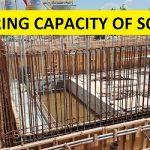Dampness in a simple term is when excess water molecule is on building which results to visible growth of moulds and destruction or disturbance of wall surfaces and materials. At this stage, you begin to observe the presence of moisture on the body of a building, usually inside, a little below the window level.
You can easily see this when you raise the carpet and notice presence of water under it
Possible Causes Of Dampness In A Building
1 Rain– If the roof is not well constructed to take out water rain, it may lead to dampness on walls due to leakages down from roof to wall.
2 Faulty Plumbing System-Leaking pipes will cause water to affect the building, which also leads to dampness.
3 Waterlogged soil-Moisture in the soil can rise up into the building through capillary action and cause dampness in building.
4 Area susceptible to extreme flood and bad weather condition.
5 Area close to canal/gully etc. which can experience an overflow of water.
6 Using wet or unseasoned building materials.
7 Air conditioning system-When hot humid air comes in contact with materials cooled by the air-conditioning process, it causes condensation on the liquid water on the surfaces.
8 Indoor activities-Which releases moisture into the air like cooking, dishwashing, clothes washing, bathing etc.
9 Roof- Leak from bad slate/tile or cracked concrete gutter will increase build up of moisture in walls ,timber and plaster.
10 Poor quality works-Water penetration through walls can occur as a result of inadequately installed roof covering, improper treatment or covering of oversite concrete.
11 Use of non porous or breathable coatings on walls-Such as fine cement render and oil paint. When moisture is absorbed through fine cracks in the coatings but can’t then evaporate back out through the waterproof surface.
12 Higher external ground level around the property. That is when the building level is lower to the road and the surrounding environment
Effects of Dampness in a Building
It causes efflorescence which may ultimately result in disintegration of bricks, stones, tiles etc.
Causes rotting of wood.
Deteriorate electric installations.
It may result in softening and crumbling of plaster.
Causes petting off and removal of plaster.
It may cause bleaching and flaking of paint with the formation of colored patches.
It may result in the warping, buckling and rotting of timber.
It may lead to the corrosion of metals.
It may cause deterioration to electrical fittings.
It promotes growth of termites.
It creates unhealthy living conditions for the occupants.
Causes corrosion of metallic fixtures.
Deteriorate carpet & furniture’s.
Causes spots on the floors and walls.
Causes petting off and removal of plaster.
Causes bleaching and blistering of paints.
Causes effloresce.
Dangerous for the health of occupants.
Reduce the life of structures.
How You Could Prevent Dampness in a Building
1 Introducing damp proof course during construction of foundation especially in waterlogged area.
2 Using raft foundation mostly in waterlogged area.
3 proper concrete mix ratio and fine aggregates which helps to make concrete impervious.
4 Adequate concrete thickness.
5 Using bitumen on concrete roof surfaces.
6 Mixing waterproof cement with concrete.
7 Using breathable paint.
8 cavity wall construction- This is shielding the main wall of the building by an outer skin wall leaving a cavity in between the two. The cavity prevents the moisture from travelling from the outer to the inner walls (Reason why hollow blocks are popular in Lagos, while solid blocks are used more on higher level grounds like Benin city etc)
Corrective measures for Dampness
1 Block every leaks from internal plumbing systems i.e replace damaged pipes and make sure the joints are properly sealed.
2 Repair leaking water and damaged overflow downpipes.
3 Repair damaged below ground drainages.
4 Pipe away rainwater from roof out of building either to main drain or soakaway.
5 Check and repair blockages to downpipes.
6 Avoid trees of strong roots too close to the building to stop cracks on walls and damage to pipes.
7 lower the ground floor outside the building if possible.
8 Opening up a building to allow air to flow in and out is important-The problem with long inhabited buildings.
9 Use of vents in buildings
10 Breathable or permeable internal paints to allow the dispersal of moisture from a plastered wall.


